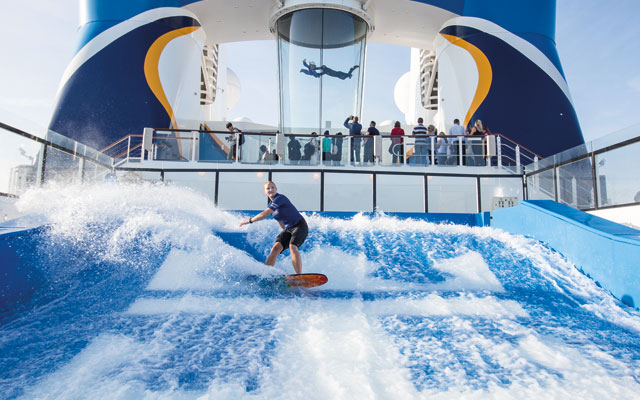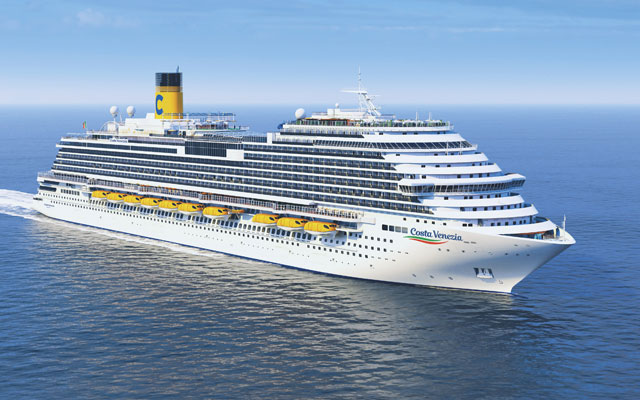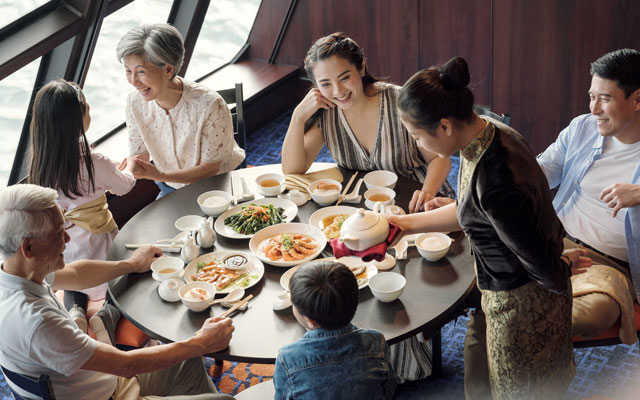With cruise ships, itineraries and on-board experiences becoming more diverse than ever, cruise industry leaders say travel advisors in Asia can do more to tap the lucrative opportunities that a burgeoning cruise market brings

With cruise penetration in some fast-growing markets in South-east Asia as low as 0.02 per cent in recent times, education is an important next step for the region’s travel agents to expand their revenue horizons.

Cruise passengers originating from Asia crossed the four million mark in 2017, up 20.6 per cent over 2016, and as of late last year was the world’s fourth largest cruising region, said Jiali Wong, regional manager, Asia, Cruise Line International Association (CLIA) during a travel agent seminar held by the association during ITB Asia.
While China is the region’s largest source market, Wong pointed out that “almost every market in Asia saw double-digit growth”.
The statistics reflect healthy consumer interest in a region where travellers are starting to “recognise cruise holidays as a relaxing and value-for-money option”. It also helps that cruise is “a natural fit” for families, a key travel segment in Asia, she pointed out.
Indeed, family travel presents a lucrative segment for cruises in Asia, according to Steve Odell, senior vice president and managing director Asia Pacific, Norwegian Cruise Line Holdings.
“One of the most important trends that we (are seeing) in Asia is multi-generational travel. A lot of times in Asia it’s the grandparents hosting the family, and we have big extended family groups coming out from most markets, particularly Singapore, the Philippines, Hong Kong, Thailand,” he commented.
Cruising a last bastion for agents
Said Wong: “Unlike a lot of travel segments, where consumers are starting to book direct, travel agents remain a key distribution channel for cruise lines.

“In fact, the majority of cruises have over 80 per cent of their products listed by travel agencies. This translates to potential for travel agents to tap into the cruising segment to increase sales,” she added.
Cruise lines are also stressing the key role that agents play in the distribution and booking of cruises.
“The airline and the hotel business have educated travellers to book online but agents still play a major role in our booking process because a cruise is a more invested experience (than a car ride or flight),” said Odell.
“Agents still have a fundamental role in the booking process because people have a lot of questions about cruises. We have online booking tools, and a growing number will book online, but these will be second- and third-time cruisers who are over the line of what they are buying,” he continued.
For Genting Cruise Lines, OTAs are responsible for just 17 per cent of bookings in China, but this is already a good deal ahead of any other country in the world in terms of online distribution, according to Siv Forlie, senior vice president – revenue management. “All in all, 75-85 per cent of business comes from agencies, online and offline,” she added.
Although Genting is “working very hard” to push online sales with e-commerce strategies and website revamps, she said the online format is often a “disaster for selling cruises” due to the amount of content that needs to be displayed for consumers to make a decision.
“When it comes to still being dependent on third parties, traditional partners are not moving as fast into the Internet age, although we tell them the Internet is here to stay.”
Plugging the knowledge gap
Amid the cruising boom in Asia, penetration rate in some fast-growing markets in South-east Asia remain as low as 0.02 per cent, underscoring the need for the region’s travel agents to enhance their product knowledge and marketing capabilities to tap the growth potentials.

CLIA’s Wong stressed that travel agents “need to be more cruise-educated by taking the next step to familiarise themselves with products”. CLIA is stepping up support for travel agents looking to sell cruises, through training and accreditation as well as sharing resources such as marketing toolkits.
Having joined forces with the Malaysian Association of Tour and Travel Agents in November 2018, CLIA Asia is stepping up its efforts to drive cruise education and awareness in Malaysia with its latest MoU signing with Malaysia Cruise Industry Association (MCIA).
“CLIA Asia’s mandate is to provide essential training, resources and support to travel agents in the region. Globally, we see that cruise markets with the highest market penetration have the most “cruise educated” travel agents,” Joel Katz, CLIA Australasia & Asia managing director said.
The partnership with MCIA with provide CLIA with the opportunity to better equip members with better skills to promote and sell cruise holidays, while MCIA will leverage CLIA’s expertise to educate their travel agent members and raise the profile of cruise tourism.
Cruise leaders can’t stress enough the value that this sector brings for specialist advisors.
Seeing “huge opportunity” for agents, Odell said: “Agents in the region haven’t been brave enough to say they are cruise specialists. Australia is quite a sophisticated cruise market with a lot of cruise specialists, and they are people who say they only sell cruises. But in Asia it’s still a big issue – and a big opportunity,” he remarked.
“Agents should also think what they can potentially earn from selling cruises. We are quite often an inclusive product where they are earning higher value commissions, (compared what they make from hotels and airfares). With cruising they are generally selling four to five days of travel – we pay very generous commissions.”
Odell hence urges travel agents to “find the right partner, utilise the resources that partner can give you and become a specialist”.
“It’s about partnerships – agents can’t do it on their own, and we can’t do it on our own. There’s a lot of money to be made (in cruising),” he stressed.
Indonesia: low penetration translates to growth opportunities
In Indonesia, the outbound cruise market was showing an alluring 40.2 per cent year-on-year growth, Wong shared last year. Yet, the most recently published figures from CLIA showed that one in 5,600 Indonesians were cruising, putting the penetration rate at only 0.017 per cent.
The knowledge gap and lack of cruises departing from the country’s key outbound travel cities are major obstacles, according to some travel agents polled.
Selayar Kepulauan Lestari – which has been offering yacht and cruise itineraries out of Bali, servicing mainly European travellers – is now pivoting into Indonesia’s outbound cruising market.
Company spokesperson Iwan Syahlani shared with TTG Asia plans to undergo the association’s accreditation programme to steer his company into the cruising market.
He said: “(As the numbers show), there is a large potential market of Indonesians wanting to enjoy cruising around the world.”
“Unlike in Singapore, there is (little) happening in Indonesia to educate travel agents and help them better understand cruise tourism,” Iwan said, adding that he would like to learn more about cruise products before rolling out marketing campaigns in “big city markets” like Jakarta, Medan and Surabaya.”
Apart from CLIA’s training and accreditation, Iwan was also pursuing learning opportunities with a Jakarta-based consultant in cruise line marketing.
Further highlighting the importance of education for travel agent is the proliferation of cruise products in the region, not only in terms of capacity but also the types of offerings available.
“Ships are moving more and more to the east. This year we’ll see almost 38 cruise lines represented in Asia with more than 78 ships. There is also more variation in the types of cruise products,” CLIA’s Wong pointed out. For example, in addition to large ships, small luxury cruising is also catching on in Asia.
But for Katarina Indrawati, EMFA Tours & Travel in Indonesia, product knowledge and marketing alone are insufficient to help sell cruises to Indonesians.
Cruise sales are just beginning to come in at the agency, which offers Royal Caribbean and Genting cruises. In 2017, she said customers were seeking information on the products. By late 2018, they began making bookings.
“It took a long time to provide the information and (convert into sales),” she said, explaining that the lack of cruise departures from Indonesia’s main outbound travel cities is a big obstacle, particularly as fly-cruise could still be relatively pricey for her clients at the moment.
“It’ll absolutely help if we have cruises departing from (primary outbound cities). I think there are little to none (other than from Bali) for now. Genting stops in Surabaya, but it is not the point of departure. Indonesian cruisegoers would have to buy tickets to Singapore and back, on top of the cruise product.”
“Air tickets can sometimes be priced quite high. Cruises set the schedule, so we have to buy the ticket accordingly and cannot rely on (seasonal) airfare discounts.” – Additional reporting from Xinyi Liang-Pholsena



















